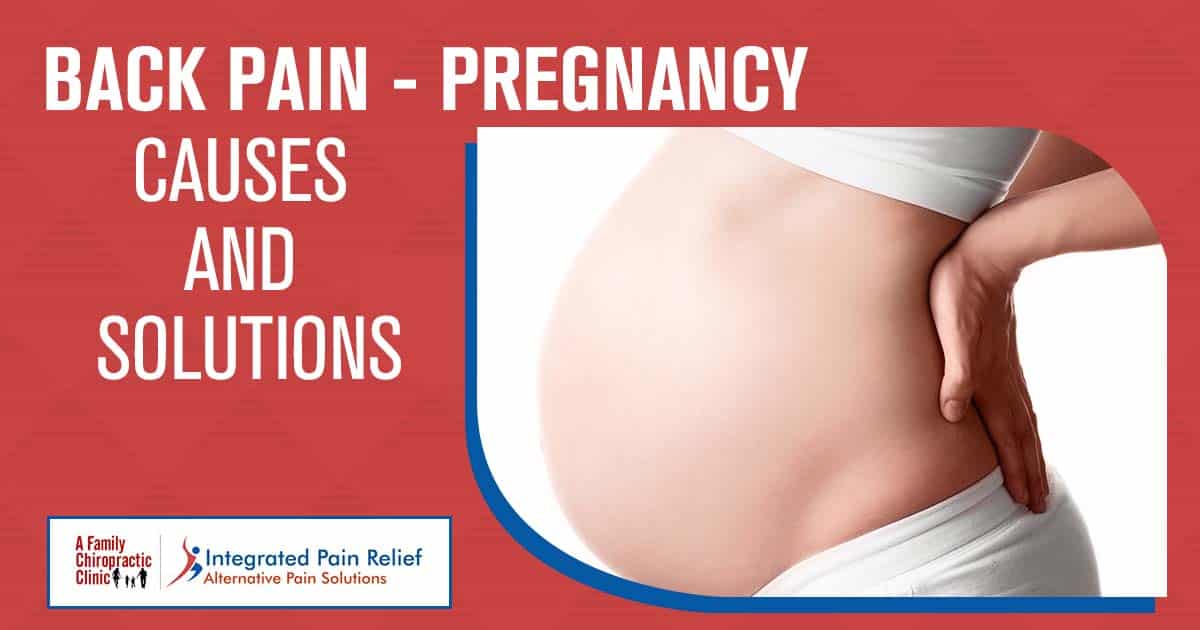Back Pain is extremely common during pregnancy. In fact, it’s so common that several items have been created to help ease the pain and discomfort that most women experience in their lower back during pregnancy. Up to 80% of women have some experience with lower back pain at some point during pregnancy.
We help many women find relief from pain here at A Family Chiropractic Clinic in Denton, Texas. Our staff has been expertly trained to educate expecting mothers about how to prevent and reduce back pain over the course of their pregnancy. We want to share this information with you, in hopes that you too can find comfort.
Types of Lower Back Pain during Pregnancy
Pregnancy has quite an impact on a woman’s body. Back pain isn’t limited to women who are at least halfway through their pregnancy. Many women experience pain and discomfort early on due to the hormone cocktail that is created along with their child. Hormones such as relaxin and progesterone are released early in pregnancy to help prepare the woman’s body. These hormones allow the ligaments and joints to relax and loosen, which can directly result in cramping and pain in the lower back.
One primary type of pain that women experience during pregnancy occurs in the lower back, or lumbar region. This is a common type of back pain that many people endure even when pregnancy is not a factor. However, lumbar pain becomes significantly more intense the closer a woman gets to delivery. If a woman has experienced prior pain in the lumbar region before her pregnancy then she is more likely to experience intensified lumbar pain throughout her pregnancy. It’s also relatively common for those women who have lower back pain when they ovulate to suffer from the same pain while pregnant.
The other leading type of back pain during pregnancy is known as posterior pelvic pain. The hormones released during pregnancy to loosen ligaments and joints also impact pelvic joints. The loosening of these joints and ligaments requires muscles to work harder. This combined with typical pregnancy weight gain puts even more stress and pressure on the area. This weight is supported by the muscles in the back and legs, which have to account for the change in center of gravity. The change in the center of gravity can cause pain and discomfort during normal, everyday activities as the muscles struggle to compensate for the changes.
Additional Types of Back Pain during Pregnancy
Aside from the typical types of back pain mentioned above, pregnant women are also more susceptible to alternate forms of pain and discomfort. A growing baby puts pressure on the internal organs in the abdomen. This could mean added pressure on the kidneys and bladder. The position of the baby could make this pain stronger or weaker depending on how much pressure is placed on the organs. A urinary tract infection or kidney infection can also contribute to back pain. Any pregnant mother who suspects she might have a UTI or kidney infection should speak with her doctor right away.
Pregnancy also makes women more susceptible to back injuries from daily tasks. With a change in the center of gravity, tasks that involve carrying or bending over pose an additional risk to the mother. It’s easy to strain the back further with simple actions. It’s important to always be aware of how your body moves and responds to different things. Being mindful of limitations can help prevent serious injury during pregnancy.
Preventing and Easing Back Pain during Pregnancy
The best thing to do during pregnancy is to take preventative measures. The best results are often seen in those who establish an exercise routine that focuses on stretching and strengthening back and leg muscles. A favorite form of exercise among expecting mothers is swimming. The buoyancy achieved by swimming helps relieve the pressure from the joints and muscles of the back and legs. It helps increase strength and ease pain in a gentle way. Some gyms and recreation centers offer swimming fitness classes specifically for pregnant women. It is important to remember to be mindful about overstretching and avoid high-impact activities.
If swimming isn’t an option for you then there are a number of other activities targeted for pregnant women. Many women thoroughly enjoy yoga classes designed for pregnancy. They tend to focus on gentle exercises to strengthen muscles while relieving pain and tension. Gently stretching while being careful not to overstretch can relax and strengthen. As with any exercise, it’s key to listen to your body. If anything feels painful or causes more stress then you should stop. If you have questions or fears about exercising during pregnancy consult with your doctor.
When exercise doesn’t help provide relief or if it isn’t an option, some women turn towards other methods of relief. This can often include acupuncture or chiropractic care. In either of these cases it’s extremely important to find a provider who has training and experience with treating pregnant women.

